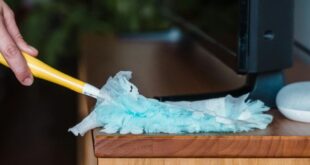Aloe vera is a difficult plant to maintain in the summer. Here’s how to deal with the most common problems.
Photo Credit: pisauikan via Unsplash
Sunburns and painful peeling of the skin are a part of summer fun. Aloe Vera, a succulent that has a cooling gel with almost magical skin-care properties, is a popular plant in the summer. The cooling gel extracted from the plant can be used to soothe sunburns, fade dark spots and heal skin imperfections. It also moisturises the skin and prevents signs of ageing. It can be an exciting experiment for first-time plant owners – after all, succulents are easy to care for, right? Yes and no.
Aloe vera is a good choice for beginners, but there are some problems that aloe plant owners may encounter. These issues are often caused by common problems. Here are some common problems and solutions to help you keep your aloe plant thriving. You can also use the soothing gel all summer to treat sunburns.
Problem #1: Reddish brown leaves
Aloe vera is able to get sunburnt. This may shock first-time owners. This is especially surprising since cacti thrive in sunny and desert areas. However, although cacti are succulents, not all succulents are cacti – like a square-and-rectangle kind of thing. The truth is that aloe doesn’t enjoy too much sun. If the leaves are exposed to direct sunlight for too long, they can turn bright reddish.
Solution #1: Move your plant to an area with indirect sunlight, or provide some shade.
Aloe vera will grow best if it is exposed to some sun, but not too much, and not at the hottest times of the day. For aloe to thrive, it is best to place the plant near a window.
Problem #2: Yellow leaves, brown leaves or soft, mushy and yellow leaves
Aloe vera leaves that are yellowing or browning can be alarming. You may think that you should water the plant more because most plants brown out due to lack of water. That jelly-like substance inside the leaf is mostly made up of water, right? You must have to use a lot water to make it. Well, not quite…
Solution #2: Water your plant less
Overwatering is the most common reason for yellow or brown leaves. Surprisingly, aloe vera doesn’t need a ton of water to thrive – in this way, it much resembles a cactus. Water your aloe vera only once or twice a week, or whenever you feel the soil is completely dry.
Problem #3: Root rot
This is a term that gardeners hate, and it doesn’t sound very nice to people who don’t garden. Aloe vera root rot can present with a number of symptoms. Here are some to be on the lookout for:
- Soft, mushy leaves or transparent leaves
- Yellowing and browning of the leaves
- The soil has a musty, rotten smell
- The soil remains wet for several weeks
- The plant is wilting, or it has drooped.
- The roots of the plant are easily removed from the soil
- Black and mushy roots
Solution #3: Trim it!
Root rot can be treated by gently pulling the plant from the soil. Then, using a pair clean, dry scissors to trim any roots that are not salvageable. Any roots that are black, brown, mushy or brittle should be cut off. Do not be afraid to trim the roots completely. Aloe vera can recover even without any roots. Normal aloe roots are white or a light shade of tan. After cutting off the dead roots, do not replant it right away – the plant needs time to air dry the roots completely, and allow the cuts you’ve just made to “scab” over. Leave it standing up in a shaded, dry area – use newspaper or rocks to prop it up if needed – for 24 to 48 hours. As a bonus tip, sprinkle some cinnamon powder on the roots of the plant – it’s a natural antifungal! Finally, repot in fresh, dried succulent or cactus dirt. After planting, though you may want to reach for the watering can, hold off on watering it for about a week – the plant needs time to acclimatise.
Problem #4: Pests
Most often, a weak aloe vera will attract pests. These include mealybugs and spider mites. The above-mentioned ailments can cause the aloe vera to become weakened. This can be due to poor air circulation in the plant. There are some common signs of a plant pest infestation:
- A sticky, sap-like residue that is caused by mealybugs or aphids
- The plant has white clumps, which look like cotton. Mealybugs are responsible for this.
- Spider mites can be identified by the web-like structure between the leaves or the underside of plants.
- The leaves may be curled or discoloured (after a sap feeding by insects).
- Visible insects
- Black spots or shell-like bumps
- General plant weaknesses
Solution #4: Pest Control
From the most to the least severe, here are a few options for a infestation:
- Manual removal of the pests – wipe them off with a damp cloth and monitor the plant from there.
- Sprinkle turmeric or cinnamon powder around the base of plants as an antibacterial and antifungal natural approach
- Isopropyl alcohol – mix one part rubbing alcohol and one to two parts water and either spray the leaves of your plant or wipe it down with a cotton swab or cloth
- Soap and water spray – one or two drops of gentle dish soap can be mixed in water and sprayed directly onto the leaves of the plant.
- Garlic spray or garlic cloves – garlic cloves can be blended with water, strained, and sprayed directly onto the plant. Garlic can be planted directly in the soil as is to repel insects.
- If all else fails there could be a deeper infestation in the soil. Repeat the steps of solution #3 in this list – pull the plant out, give the roots a trim if needed, set it out to dry for a day or so, and replant in fresh, dry soil. Before replanting the plant, clean the pot thoroughly and remove any old soil.
Aloe Vera is a resilient plant that can withstand a lot. Though sometimes it can be hard to find the perfect conditions for the plant to thrive in, it’s quite hard to kill completely – even a healthy base with no roots at all could go back to being a big, beautiful plant with a little care and time invested into it, believe it or not! Don’t lose hope if you notice that your plant is looking a little worse for wear. You’ll be able to make all the gel you need in a short time if you are determined.
 Costa News Spain Breaking News | English News in Spain.
Costa News Spain Breaking News | English News in Spain.





